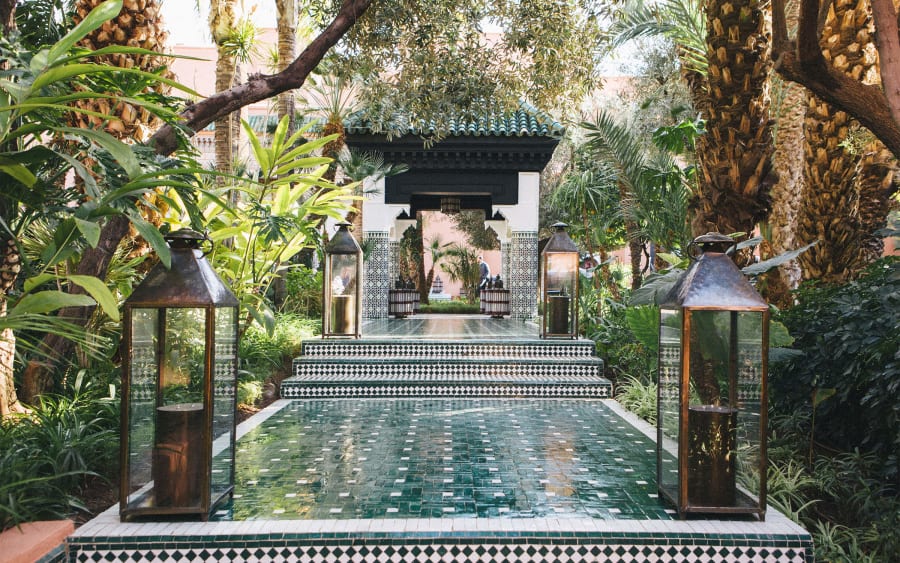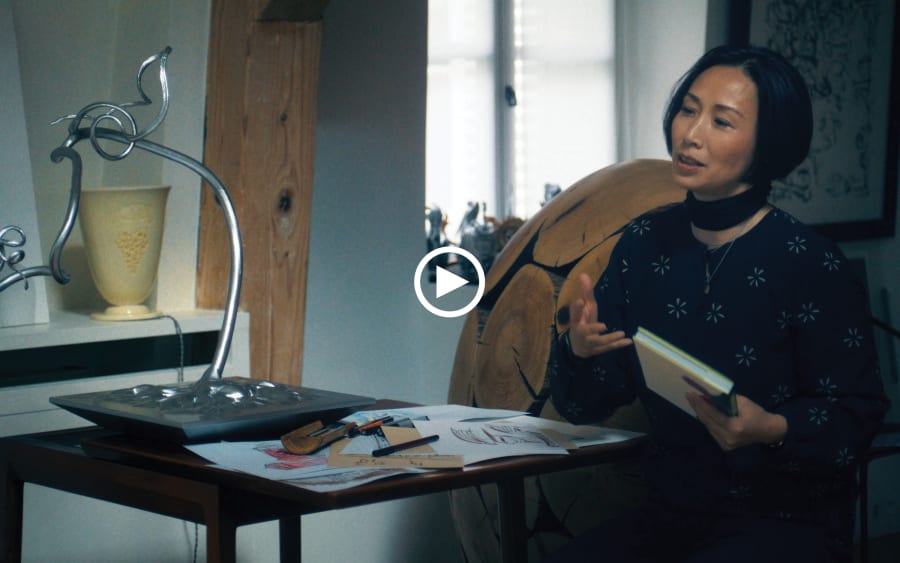It was by returning to the beginning that Mohamed Melehi positioned himself to speak to the future. Which beginning? The one where the first human understood how the eye and hand could work together. Where what the eye perceives and keenly scrutinizes, transmits an impulse to the hand foreign to its usual functions. Is it the capacity to dream that takes hold of the eye? Is it the magnetic whirlwind of the imagination that runs through it? Is it the mystery of beauty that moves it?
As I ask these questions, I am surprised to discover that they continue to resonate so strongly even now. The arts of indigenous peoples, and of their ancestors who lived in caves and covered the walls with signs and paintings, have never ceased to speak to us and inspire us, from the birth of modernity to the present day.
It is in this context that we find the eye and hand of Mohamed Melehi. Morocco, mid- to late 1960s: Barely ten years into its emergence from colonial darkness, the country begins to question its identity, the needs of its society, and how to build its future.
The ones formulating these questions are a handful of young writers, artists, intellectuals, and researchers in the fields of humanities and social sciences. Among them, three poets and three painters stand out. The poets, Mohammed Khaïr-Eddine (1941–1995), Mostafa Nissabouri (b. 1943), and the author of these lines, took possession of the French language, turning it into an instrument that could blow up the structures of colonial alienation and generate a new imaginary, a resolutely avant-garde culture. The painters, Farid Belkahia (1934–2014), Mohammed Chabâa (1935–2013), and Melehi (1936–2020), worked together and taught at the School of Fine Arts of Casablanca, where they subverted the conception and practice of visual arts in a very short length of time, positioning Moroccan painting within a universal approach.
Among these figures, Melehi occupies a unique place. From the outset of his career, he had, as the French expression goes, a ‘happy hand’. And thinking of hands, I can see his quite clearly: open, with a drawing in the middle of the palm – an eye. In popular imagery, and particularly in North Africa, this image has come to be known as ‘Fatima’s hand’, but of course it is also found in other cultures and in the distant past. In all instances, it is a symbol of protection and good luck – it wards off bad fortune and attracts positive waves of energy. ‘Waves’… did I just say ‘waves’? That’s because we have crossed the threshhold into Melehi’s pictorial world!
The first time I attended an exhibition of Melehi’s work (it was in Rabat in late 1965, if my memory serves me well), I was utterly awestruck, disoriented almost, by how new and ‘foreign’ I found this way of painting when compared to the Modern painting I was used to seeing. At the same time, I felt it was strangely familiar! The Fez native in me, the son of a saddle maker, had stored within him since early childhood the diversity of what the city’s craftsmen’s ‘fertile hands’ gave him to see and handle, without realizing at the time, the refinement of their art and the ingenuity with which they managed to integrate it into the daily lives of their contemporaries.
Such an approach appealed to me all the more because it intersected with what I was in the process of developing as a poetic practice: the deconstruction of the language in which I expressed myself – a French already nourished by the advances of literary modernity – while at the same time building from the oral foundation specific to folk poetry, sculpting text where the written word becomes the spoken word, carried by the breath.
From them on, Melehi and I knew we were on the same path, where each other’s work would fertilize the other’s, where friendship found its true raison d’être.
The literary review Souffles (1966-1972) was the perfect platform for this collaboration. It was Melehi who designed the cover and layout of the first issue: Under the square bearing the journal’s title in calligraphy (which required real concentration to decipher), there was a black sun surrounded by small particles. In hindsight, and without wanting to boast, I can say that that artwork was, and will remain, truly revolutionary. Personally, it gave me a sense of Melehi’s extraordinary talent and of what his work was to become: a gigantic undertaking aimed at forcing the space of the canvas to accommodate every nuance of light, from its birth to its disappearance, to let the waves of the river of time and the ocean of love flow peacefully by.
Confronted with this striking use of space, the discerning viewer realizes that the artist does not stop at the canvas. He transposes it, pulling it out beyond the frame to join other areas of the imagination and thought. With Melehi, the canvas never loses a scintilla of the colors he offers it – in fact, it asks for more, knowing that with him there is never an excess. And then, when we take a few steps back, another dimension of the canvas reveals itself to us: Sculptures emerge from the very heart of the ‘flat’ colors, surging forth into the space they have created. This is why I dare to adapt a well-known saying: with Melehi, you never see the same painting twice!
Today, we can celebrate the international recognition his work has garnered. But the important point for me in deciding to write this modest account has been to relate some of the historical, political, social, and cultural constraints under which this work came about and evolved. It was perhaps these very restrictions that enabled such an unprecedented creative adventure to see the light of day within an historical context and a state of society that were not particularly favorable to it.
Mohamed Melehi was one of those pioneers, a trailblazer, a visionary, who enabled many of us to become, in the words of the Algerian poet Jean Sénac, ‘citizens of beauty.’
Abdellatif Laâbi, Créteil 2024
The work of Mohamed Melehi will be presented at Art Basel Paris by Loft Art Gallery (Casablanca) in the Premise sector.
Abdellatif Laâbi was born in Fez in 1942. He edited the avant-garde review Souffles (1966-1972). His literary work, and his poetry in particular, is now widely recognized around the world and has been translated into many languages.
Caption for header image: Mohamed Melehi, Untitled, 1980. Courtesy of Loft Art Gallery.
Published on September 17, 2024.


